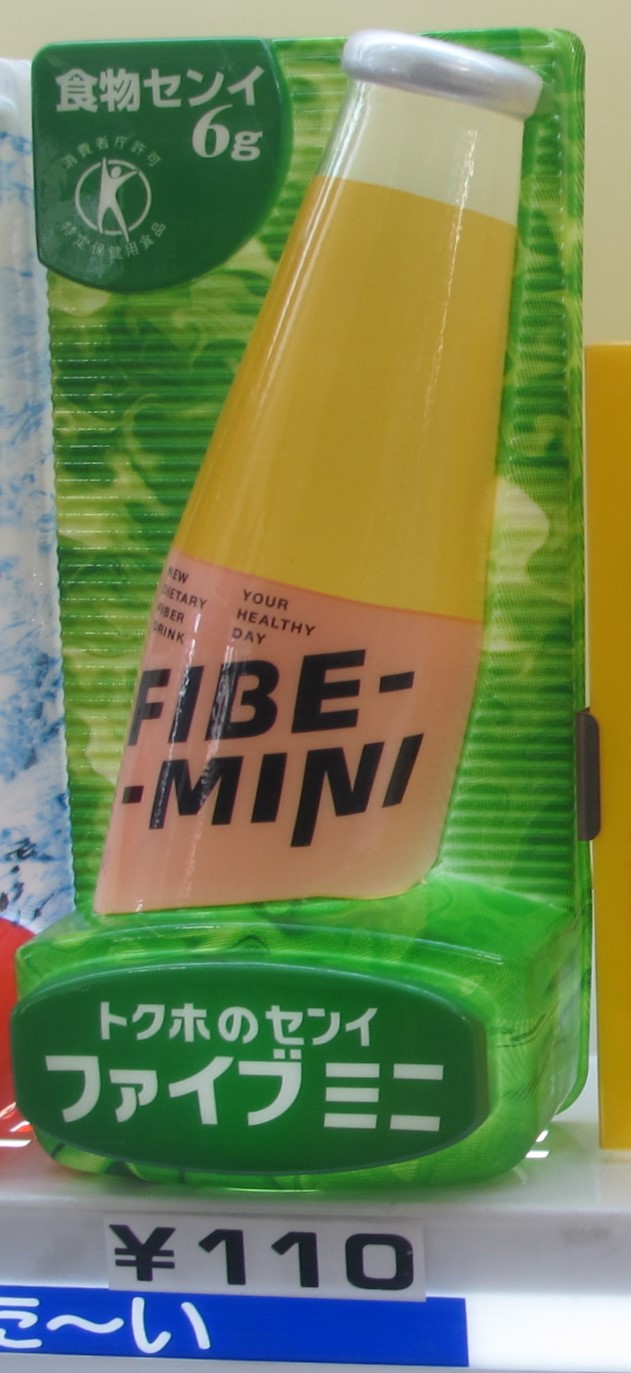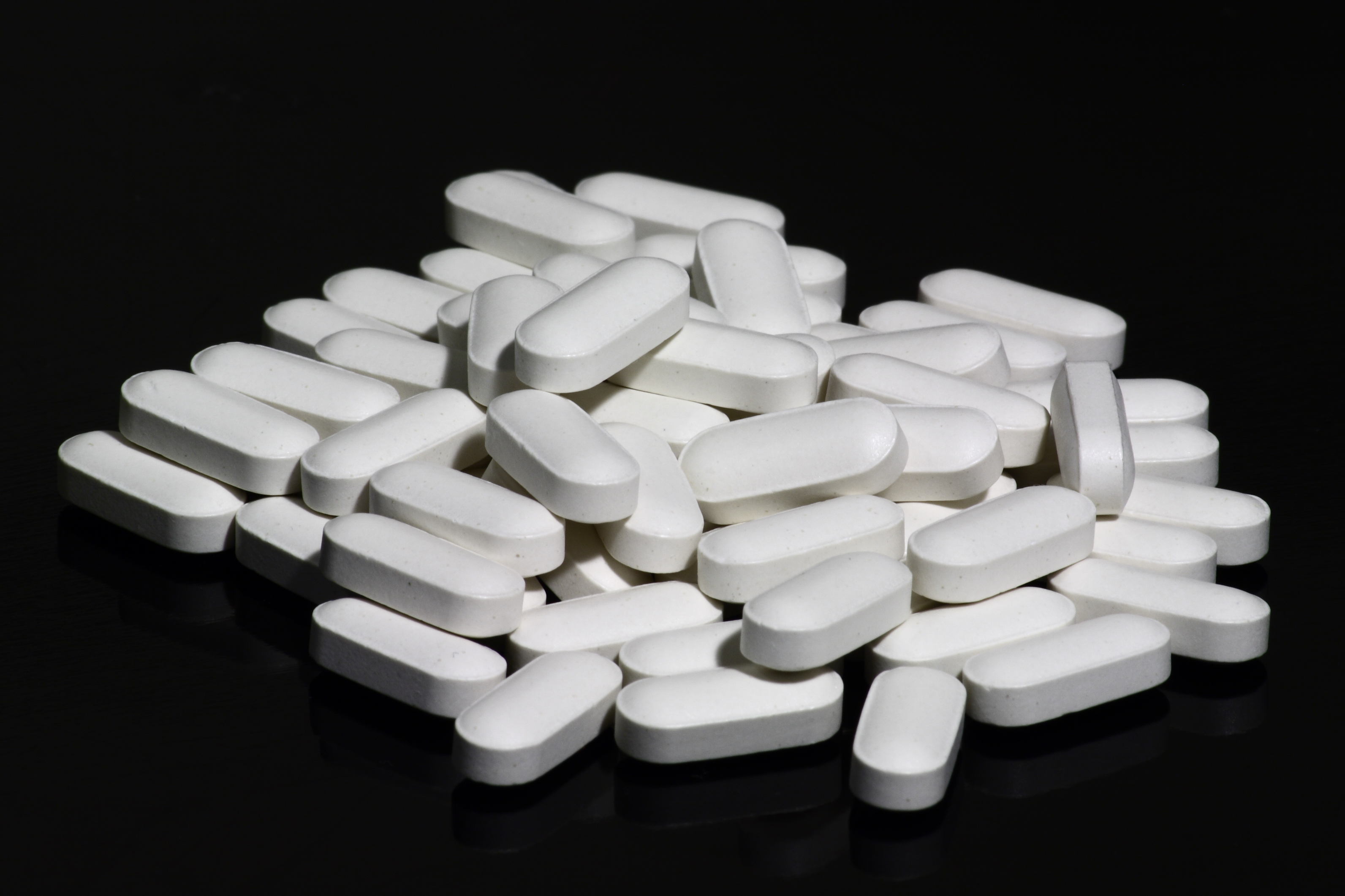|
Fibe Mini
Fibe Mini () is a Japanese soft drink with added dietary fiber produced by Otsuka Pharmaceutical. It was launched in 1988, and is often considered the first " functional food". Overview The functional ingredient is polydextrose, which has been associated with health benefits. The drink also includes minerals and vitamins. It was a hit upon launch and began the functional food trend in Japan from 1988 to 1989, a period that produced 51 dietary fiber drinks. The fiber sources of these products were often added to milk and soft drinks A soft drink (see § Terminology for other names) is a drink that usually contains water (often carbonated), a sweetener, and a natural and/or artificial flavoring. The sweetener may be a sugar, high-fructose corn syrup, fruit juice, a s .... References External links * (in Japanese) *{{official website, http://fibemini.hk/ (Hong Kong)Food & Dietary Supplements Soft drinks Japanese drinks Dietary supplements Otsuka Pharmaceutical [...More Info...] [...Related Items...] OR: [Wikipedia] [Google] [Baidu] |
Soft Drink
A soft drink (see § Terminology for other names) is a drink that usually contains water (often carbonated), a sweetener, and a natural and/or artificial flavoring. The sweetener may be a sugar, high-fructose corn syrup, fruit juice, a sugar substitute (in the case of ''diet drinks''), or some combination of these. Soft drinks may also contain caffeine, colorings, preservatives, and/or other ingredients. Soft drinks are called "soft" in contrast with " hard" alcoholic drinks. Small amounts of alcohol may be present in a soft drink, but the alcohol content must be less than 0.5% of the total volume of the drink in many countries and localities See §7.71, paragraphs (e) and (f). if the drink is to be considered non-alcoholic. Types of soft drinks include lemon-lime drinks, orange soda, cola, grape soda, ginger ale, and root beer. Soft drinks may be served cold, over ice cubes, or at room temperature. They are available in many container formats, including ... [...More Info...] [...Related Items...] OR: [Wikipedia] [Google] [Baidu] |
Dietary Fiber
Dietary fiber (in British English fibre) or roughage is the portion of plant-derived food that cannot be completely broken down by human digestive enzymes. Dietary fibers are diverse in chemical composition, and can be grouped generally by their solubility, viscosity, and fermentability, which affect how fibers are processed in the body. Dietary fiber has two main components: soluble fiber and insoluble fiber, which are components of plant-based foods, such as legumes, whole grains and cereals, vegetables, fruits, and nuts or seeds. A diet high in regular fiber consumption is generally associated with supporting health and lowering the risk of several diseases. Dietary fiber consists of non-starch polysaccharides and other plant components such as cellulose, resistant starch, resistant dextrins, inulin, lignins, chitins (in fungi), pectins, beta-glucans, and oligosaccharides. Food sources of dietary fiber have traditionally been divided according to whether they provide sol ... [...More Info...] [...Related Items...] OR: [Wikipedia] [Google] [Baidu] |
Otsuka Pharmaceutical
(), abbreviated OPC, is a pharmaceutical company headquartered in Tokyo, Osaka and Naruto, Japan. The company was established August 10, 1964. History OPC's parent company Otsuka Holdings Co. Ltd. joined the Tokyo Stock Exchange through an initial public offering (IPO) on December 15, 2010, at which time Otsuka Holdings was Japan's No.2 drug maker by sales after industry leader Takeda Pharmaceutical Company. The IPO debuted at $2.4 billion, making it the largest for a pharmaceutical company up to that time. Otsuka Pharmaceutical Co. LTD Holdings In 1955, the company started a football club called "Otsuka Pharmaceutical SC." In 2005 the name changed to Tokushima Vortis. The club is based in Naruto. In 2008, Otsuka Pharmaceutical Co. acquired 49% of Alma S.A., which is the parent company of CG Roxane. In March 2017, the company agreed to acquire Neurovance, Inc. for $250 million, gaining the firm’s Phase III-ready ADHD drug centanafadine (previously EB-1020). Otsuka ... [...More Info...] [...Related Items...] OR: [Wikipedia] [Google] [Baidu] |
Functional Food
A functional food is a food claimed to have an additional (often one related to health promotion or disease prevention) by adding new ingredients or more of existing ingredients. The term may also apply to traits purposely bred into existing edible plants, such as purple or gold potatoes having increased anthocyanin or carotenoid contents, respectively. Functional foods may be "designed to have physiological benefits and/or reduce the risk of chronic disease beyond basic nutritional functions, and may be similar in appearance to conventional food and consumed as part of a regular diet". The term was first used in the 1980s in Japan, where there is a government approval process for functional foods called Foods for Specified Health Use (FOSHU). Industry The functional food industry, consisting of food, beverage and supplement sectors, is one of the several areas of the food industry that is experiencing fast growth in recent years.Roberts, W. "Benefiting Beverages." ''Prepare ... [...More Info...] [...Related Items...] OR: [Wikipedia] [Google] [Baidu] |
Polydextrose
Polydextrose is a synthetic polymer of glucose. It is a food ingredient classified as soluble fiber by the US FDA as well as Health Canada, . It is frequently used to increase the dietary fiber content of food, to replace sugar, and to reduce calories and fat content. It is a multi-purpose food ingredient synthesized from dextrose (glucose), plus about 10 percent sorbitol and 1 percent citric acid. Its E number is E1200. The FDA approved it in 1981. It is 0.1 times as sweet as sugar. History Commercial manufacture of edible polydextrose originated with a process developed by Hans H. Rennhard of Pfizer, Inc. Rennhard began investigating the potential of polysaccharides as low-calorie replacements for sugar, fat, flour, and starch. In 1965, he created polydextrose, a polymer of dextrose, produced from the naturally occurring components: glucose, sorbitol, and citric acid. Commercial uses Polydextrose is commonly used as a replacement for sugar, starch, and fat in commercial ... [...More Info...] [...Related Items...] OR: [Wikipedia] [Google] [Baidu] |
Mineral (nutrient)
In the context of nutrition, a mineral is a chemical element required as an essential nutrient by organisms to perform functions necessary for life. However, the four major structural elements in the human body by weight (oxygen, hydrogen, carbon, and nitrogen), are usually not included in lists of major nutrient minerals (nitrogen is considered a "mineral" for plants, as it often is included in fertilizers). These four elements compose about 96% of the weight of the human body, and major minerals (macrominerals) and minor minerals (also called trace elements) compose the remainder. Nutrient minerals, being elements, cannot be synthesized biochemically by living organisms. Plants get minerals from soil. Most of the minerals in a human diet come from eating plants and animals or from drinking water. As a group, ''minerals'' are one of the four groups of essential nutrients, the others of which are vitamins, essential fatty acids, and essential amino acids. The five major mineral ... [...More Info...] [...Related Items...] OR: [Wikipedia] [Google] [Baidu] |
Vitamin
A vitamin is an organic molecule (or a set of molecules closely related chemically, i.e. vitamers) that is an essential micronutrient that an organism needs in small quantities for the proper functioning of its metabolism. Essential nutrients cannot be synthesized in the organism, either at all or not in sufficient quantities, and therefore must be obtained through the diet. Vitamin C can be synthesized by some species but not by others; it is not a vitamin in the first instance but is in the second. The term ''vitamin'' does not include the three other groups of essential nutrients: minerals, essential fatty acids, and essential amino acids. Most vitamins are not single molecules, but groups of related molecules called vitamers. For example, there are eight vitamers of vitamin E: four tocopherols and four tocotrienols. Some sources list fourteen vitamins, by including choline, but major health organizations list thirteen: vitamin A (as all-''trans''- retinol, ... [...More Info...] [...Related Items...] OR: [Wikipedia] [Google] [Baidu] |
Soft Drink
A soft drink (see § Terminology for other names) is a drink that usually contains water (often carbonated), a sweetener, and a natural and/or artificial flavoring. The sweetener may be a sugar, high-fructose corn syrup, fruit juice, a sugar substitute (in the case of ''diet drinks''), or some combination of these. Soft drinks may also contain caffeine, colorings, preservatives, and/or other ingredients. Soft drinks are called "soft" in contrast with " hard" alcoholic drinks. Small amounts of alcohol may be present in a soft drink, but the alcohol content must be less than 0.5% of the total volume of the drink in many countries and localities See §7.71, paragraphs (e) and (f). if the drink is to be considered non-alcoholic. Types of soft drinks include lemon-lime drinks, orange soda, cola, grape soda, ginger ale, and root beer. Soft drinks may be served cold, over ice cubes, or at room temperature. They are available in many container formats, including ... [...More Info...] [...Related Items...] OR: [Wikipedia] [Google] [Baidu] |
Soft Drinks
A soft drink (see § Terminology for other names) is a drink that usually contains water (often carbonated), a sweetener, and a natural and/or artificial flavoring. The sweetener may be a sugar, high-fructose corn syrup, fruit juice, a sugar substitute (in the case of ''diet drinks''), or some combination of these. Soft drinks may also contain caffeine, colorings, preservatives, and/or other ingredients. Soft drinks are called "soft" in contrast with " hard" alcoholic drinks. Small amounts of alcohol may be present in a soft drink, but the alcohol content must be less than 0.5% of the total volume of the drink in many countries and localities See §7.71, paragraphs (e) and (f). if the drink is to be considered non-alcoholic. Types of soft drinks include lemon-lime drinks, orange soda, cola, grape soda, ginger ale, and root beer. Soft drinks may be served cold, over ice cubes, or at room temperature. They are available in many container formats, including cans, ... [...More Info...] [...Related Items...] OR: [Wikipedia] [Google] [Baidu] |
Japanese Drinks
Japanese may refer to: * Something from or related to Japan, an island country in East Asia * Japanese language, spoken mainly in Japan * Japanese people, the ethnic group that identifies with Japan through ancestry or culture ** Japanese diaspora, Japanese emigrants and their descendants around the world * Japanese citizens, nationals of Japan under Japanese nationality law ** Foreign-born Japanese, naturalized citizens of Japan * Japanese writing system, consisting of kanji and kana * Japanese cuisine, the food and food culture of Japan See also * List of Japanese people * * Japonica (other) * Japonicum * Japonicus * Japanese studies Japanese studies ( Japanese: ) or Japan studies (sometimes Japanology in Europe), is a sub-field of area studies or East Asian studies involved in social sciences and humanities research on Japan. It incorporates fields such as the study of Japane ... {{disambiguation Language and nationality disambiguation pages ... [...More Info...] [...Related Items...] OR: [Wikipedia] [Google] [Baidu] |
Dietary Supplements
A dietary supplement is a manufactured product intended to supplement one's diet by taking a pill, capsule, tablet, powder, or liquid. A supplement can provide nutrients either extracted from food sources or that are synthetic in order to increase the quantity of their consumption. The class of nutrient compounds includes vitamins, minerals, fiber, fatty acids, and amino acids. Dietary supplements can also contain substances that have not been confirmed as being essential to life, but are marketed as having a beneficial biological effect, such as plant pigments or polyphenols. Animals can also be a source of supplement ingredients, such as collagen from chickens or fish for example. These are also sold individually and in combination, and may be combined with nutrient ingredients. The European Commission has also established harmonized rules to help insure that food supplements are safe and appropriately labeled. Creating an industry estimated to have a 2020 value of $1 ... [...More Info...] [...Related Items...] OR: [Wikipedia] [Google] [Baidu] |






_SCHWEPPES_MINERAL-WATERS.jpg)
